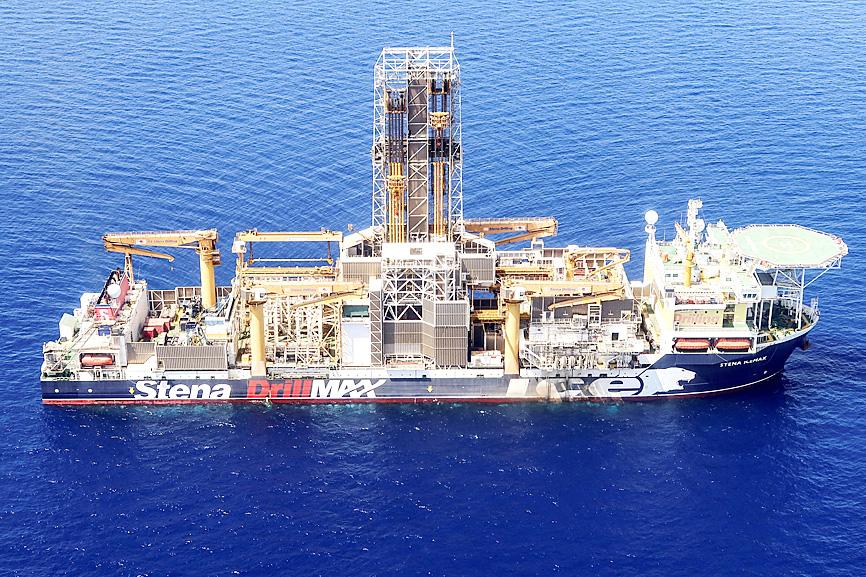Gas consumption is forecast to contract slightly this year due to high prices and Russian cuts to Europe, with only slow growth over the coming years as consumers switch to alternatives, the International Energy Agency (IEA) said yesterday.
IEA chopped its forecast for global gas demand by more than half in its latest quarterly report on gas markets.
It now expects growth of just 3.4 percent by 2025, an increase of 140 billion cubic meters (bcm) from last year’s levels, which is less than the 175 bcm jump in demand registered last year alone.

Photo: Reuters
“The consequences of Russia’s invasion of Ukraine on global gas prices and supply tensions, as well as its repercussions on the longer-term economic outlook, are reshaping the outlook for natural gas,” the IEA said.
“Today’s record prices and supply disruptions are damaging the reputation of natural gas as a reliable and affordable energy source, casting uncertainty on its prospects, particularly in developing countries where it had been expected to play a growing role in meeting rising energy demand and energy transition goals,” it added.
While Russia has cut supplies to Europe, and European nations have pledged to wean themselves off Russian gas, the impact quickly rippled throughout the world.
European states are trying to make up the shortfall by importing more liquefied natural gas (LNG) shipped by tanker, which the IEA said is creating supply tensions and leading to demand destruction in other markets.
The agency warned that the scramble for LNG risked not only causing economic harm to other more price-sensitive importers, but pushing up prices and thus contributing to additional revenues for Russia.
“In this context, an accelerated phaseout of Russian gas should primarily focus on reducing gas demand and scaling up domestically produced low-carbon gases,” such as biogas, biomethane and green hydrogen, it said.
The IEA, which advises energy importing nations on policy, said in its new forecast for lower gas demand growth that only one-fifth of the reduction came from expected efficiency gains and substituting renewables for gas.
“Our forecast’s lower gas demand growth compared to last year does not guarantee an accelerated transition to net zero emissions, as the bulk of the revision comes from lower GDP and fuel switching rather than by faster gas-to-electricity conversion and efficiency gains,” the report said.
The IEA said additional green energy transition measures would, in addition to their long-term impact in reducing emissions, ease pressure on gas prices globally by reducing supply tensions while also delivering short-term improvements in air quality by quickening the move away from coal.
“The most sustainable response to today’s global energy crisis is stronger efforts and policies to use energy more efficiently and to accelerate clean energy transitions,” IEA director for energy markets and security Keisuke Sadamori said in a statement.

Among the rows of vibrators, rubber torsos and leather harnesses at a Chinese sex toys exhibition in Shanghai this weekend, the beginnings of an artificial intelligence (AI)-driven shift in the industry quietly pulsed. China manufactures about 70 percent of the world’s sex toys, most of it the “hardware” on display at the fair — whether that be technicolor tentacled dildos or hyper-realistic personalized silicone dolls. Yet smart toys have been rising in popularity for some time. Many major European and US brands already offer tech-enhanced products that can enable long-distance love, monitor well-being and even bring people one step closer to

Malaysia’s leader yesterday announced plans to build a massive semiconductor design park, aiming to boost the Southeast Asian nation’s role in the global chip industry. A prominent player in the semiconductor industry for decades, Malaysia accounts for an estimated 13 percent of global back-end manufacturing, according to German tech giant Bosch. Now it wants to go beyond production and emerge as a chip design powerhouse too, Malaysian Prime Minister Anwar Ibrahim said. “I am pleased to announce the largest IC (integrated circuit) Design Park in Southeast Asia, that will house world-class anchor tenants and collaborate with global companies such as Arm [Holdings PLC],”

TRANSFORMATION: Taiwan is now home to the largest Google hardware research and development center outside of the US, thanks to the nation’s economic policies President Tsai Ing-wen (蔡英文) yesterday attended an event marking the opening of Google’s second hardware research and development (R&D) office in Taiwan, which was held at New Taipei City’s Banciao District (板橋). This signals Taiwan’s transformation into the world’s largest Google hardware research and development center outside of the US, validating the nation’s economic policy in the past eight years, she said. The “five plus two” innovative industries policy, “six core strategic industries” initiative and infrastructure projects have grown the national industry and established resilient supply chains that withstood the COVID-19 pandemic, Tsai said. Taiwan has improved investment conditions of the domestic economy

Sales in the retail, and food and beverage sectors last month continued to rise, increasing 0.7 percent and 13.6 percent respectively from a year earlier, setting record highs for the month of March, the Ministry of Economic Affairs said yesterday. Sales in the wholesale sector also grew last month by 4.6 annually, mainly due to the business opportunities for emerging applications related to artificial intelligence (AI) and high-performance computing technologies, the ministry said in a report. The ministry forecast that retail, and food and beverage sales this month would retain their growth momentum as the former would benefit from Tomb Sweeping Day